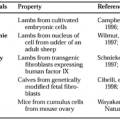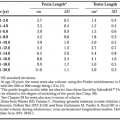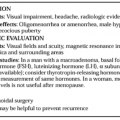CENTRAL EFFECTORS IN THE CONTROL OF APPETITE AND ENERGY HOMEOSTASIS
Part of “CHAPTER 125 – APPETITE“
The hypothalamus contains many hormones and neuropeptides that are targets for peripheral signals. Some of these central effectors stimulate appetite (orexigenic effectors), while others inhibit appetite (anorexigenic effectors). They are involved in a neural circuitry of orexigenic and anorexigenic networks that interact in a complex way in the control of appetite and energy homeostasis (see Table 125-1 and Fig. 125-1).
OREXIGENIC EFFECTORS
NEUROPEPTIDE Y
The 33-amino-acid peptide NPY, which is the most potent stimulant of food intake known, is produced by cell bodies in the ARC with axons that project to the PVN (which is thought to be the main site of its action). Centrally administered NPY causes hyperphagia with a preference for carbohydrates and promotes increased fat storage and obesity by reducing the activity of the sympathetic nervous system and by increasing the expression of LPL in white adipose tissue.22 Among several influences, there is evidence that the hypothalamic NPY system is negatively regulated by insulin, leptin, and CRH and positively regulated by glucocorticoids.14,17,23,24 NPY activity is increased in conditions associated with energy deficiency, such as caloric restriction, lactation, and intense exercise.
This response seems to be mediated by reduced negative feedback from insulin and leptin and positive feedback from glucocorticoids.
This response seems to be mediated by reduced negative feedback from insulin and leptin and positive feedback from glucocorticoids.
Stay updated, free articles. Join our Telegram channel

Full access? Get Clinical Tree






